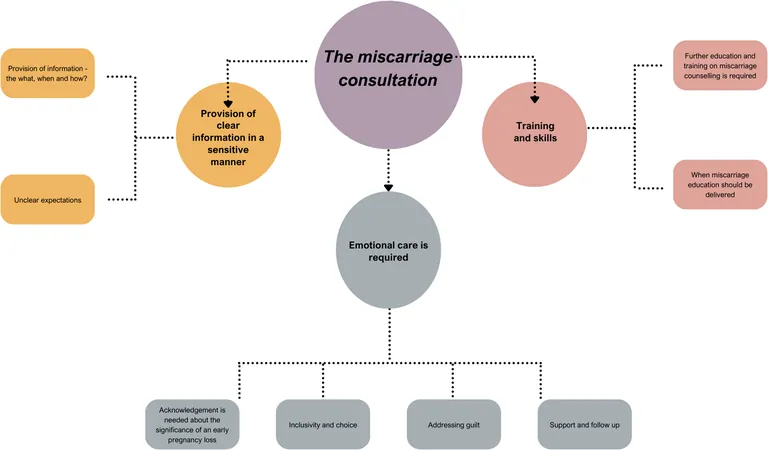
Unmasking Hidden Inequities: How Visual Impairment and Race Shape Diabetes Care
2025-07-19
Author: Jia
A Silent Crisis in Healthcare
In the intricate web of healthcare, disparities lurk in the shadows—especially for those with disabilities. Recent research highlights how visual impairments intersect with race, significantly affecting diabetes care and health outcomes. Despite the grave implications, this area has been under-researched, leaving vulnerable populations in the dark.
The Overlooked Intersection of Disability and Race
While healthcare systems are slowly acknowledging the importance of inclusive practices, the National Institute for Minority Health and Health Disparities has only recently classified disabled populations as vulnerable. With 67 million Americans living with disabilities, making up 27% of adults, understanding the unique struggles faced by these individuals is imperative. Disabled adults tend to experience higher rates of obesity, smoking, and chronic conditions like heart disease and diabetes, with healthcare costs for this group ballooning to $868 billion annually.
Revealing the Depths of Disparity
This paper posits that advanced causal modeling is critical for uncovering the tangled factors influencing healthcare access and quality. By analyzing disparities in diabetes management, the research sheds light on how race and disability entangle within the healthcare system. Key research questions have been proposed to explore the disparities further—specifying whether racial differences exist in diabetes care quality between those with and without visual impairments.
The Data Speaks: Shocking Inequalities
With a robust dataset from the TriNetX Research Network covering about 115 million patients, this study analyzed real-world health records to delve into the nuances of care disparities. Focusing on adults aged 45 and older, the findings reveal alarming trends: those with visual impairments often experience worse outcomes and lower quality care. For example, individuals with visual impairments are likelier to suffer from higher HbA1c levels and chronic kidney disease, irrespective of racial background.
Compounding Factors: The Role of Social Determinants
A directed acyclic graph (DAG) has been developed to illustrate the complex relationships between social determinants of health (SDoH), diabetes management, and healthcare access. This model visualizes how social factors directly impact healthcare access and the reliability of health records, which is crucial for understanding undocumented disabilities.
Impact of Visual Impairment on Comorbidities
Throughout the comorbidity assessment, individuals with visual impairments showed significantly higher rates of chronic pulmonary conditions, such as asthma. The connection between the increased healthcare burdens and the existence of visual impairments illustrates how multifaceted health issues can deter effective management of conditions like diabetes.
A Call for Reformed Healthcare Strategies
The disparities highlighted strongly advocate for reform within healthcare systems. Awareness must be raised around the specific needs of individuals with visual impairments, especially those from racial minorities who disproportionately shoulder the burden of chronic conditions. This study underscores the pressing need for tailored healthcare strategies aimed at bridging the gaps in diabetes management.
Conclusion: Towards Health Equity
By tackling the interplay between race, disability, and diabetes care, this research lays the groundwork for a more equitable healthcare system. Health professionals need to recognize and address these disparities to ensure that all individuals, regardless of their circumstances, receive the comprehensive care they deserve.
The Path Forward
Future research should delve deeper into the documentation practices within electronic health records, pinpointing the barriers to proper representation of those with disabilities. Innovative strategies must be developed to ensure comprehensive and inclusive healthcare for all, particularly marginalized groups.






 Brasil (PT)
Brasil (PT)
 Canada (EN)
Canada (EN)
 Chile (ES)
Chile (ES)
 Česko (CS)
Česko (CS)
 대한민국 (KO)
대한민국 (KO)
 España (ES)
España (ES)
 France (FR)
France (FR)
 Hong Kong (EN)
Hong Kong (EN)
 Italia (IT)
Italia (IT)
 日本 (JA)
日本 (JA)
 Magyarország (HU)
Magyarország (HU)
 Norge (NO)
Norge (NO)
 Polska (PL)
Polska (PL)
 Schweiz (DE)
Schweiz (DE)
 Singapore (EN)
Singapore (EN)
 Sverige (SV)
Sverige (SV)
 Suomi (FI)
Suomi (FI)
 Türkiye (TR)
Türkiye (TR)
 الإمارات العربية المتحدة (AR)
الإمارات العربية المتحدة (AR)